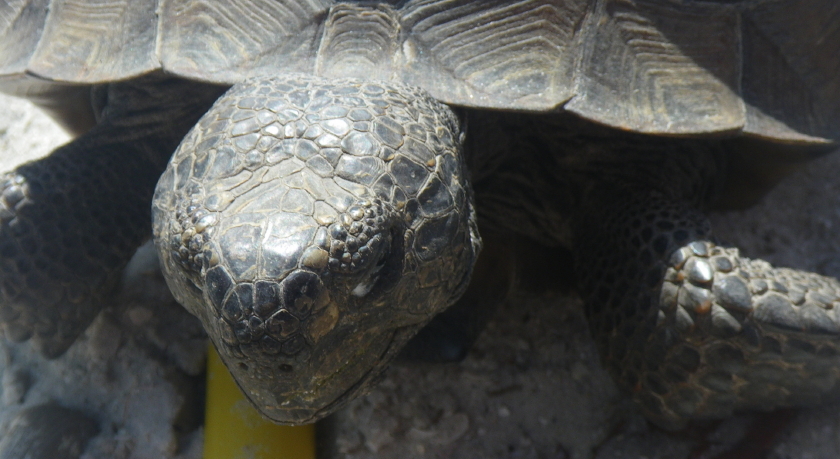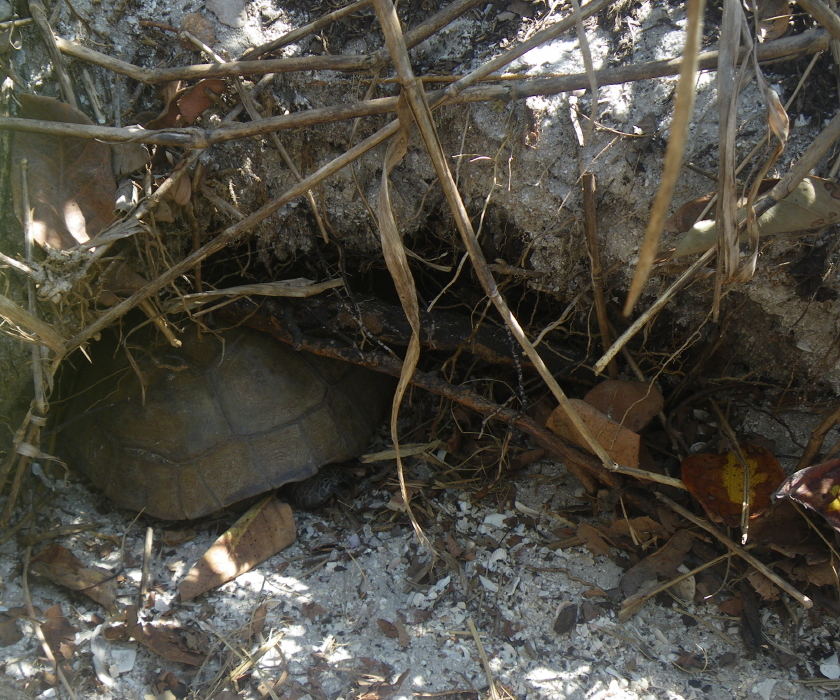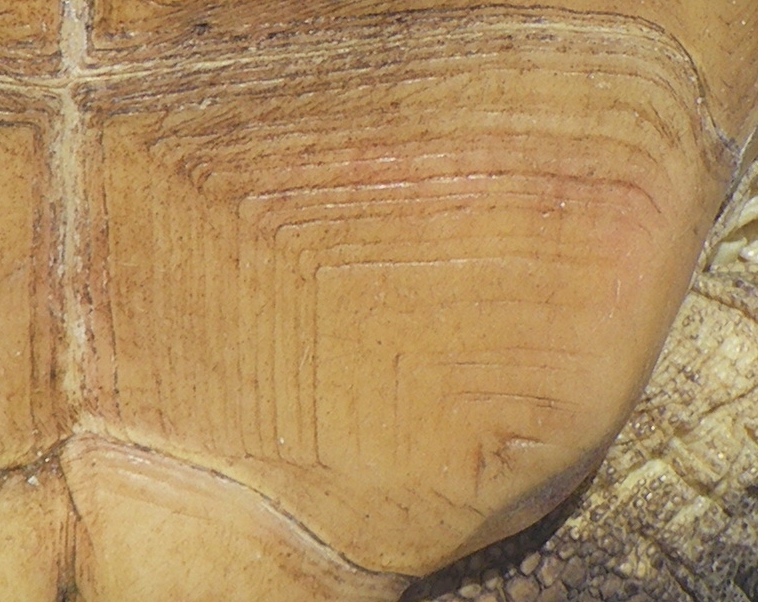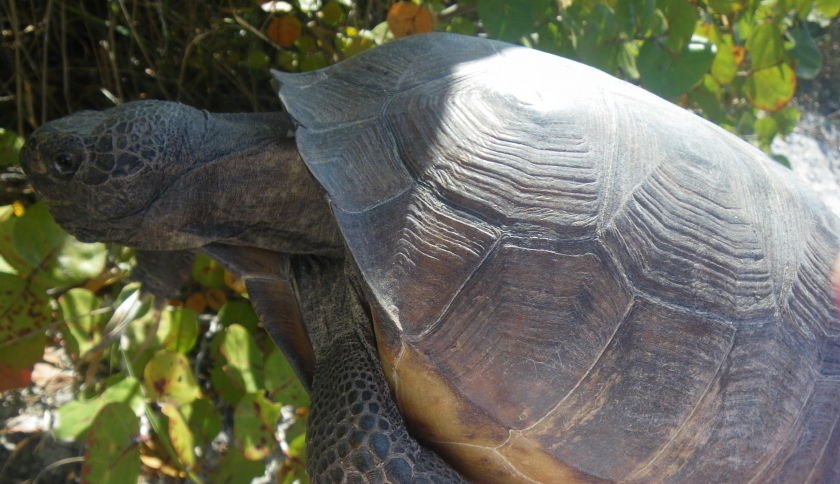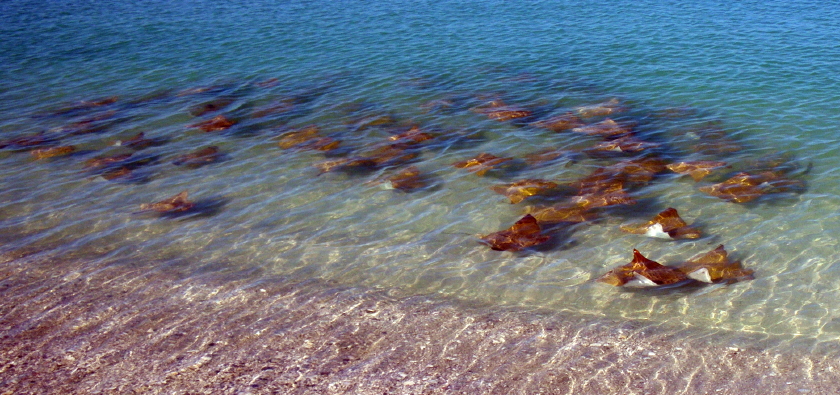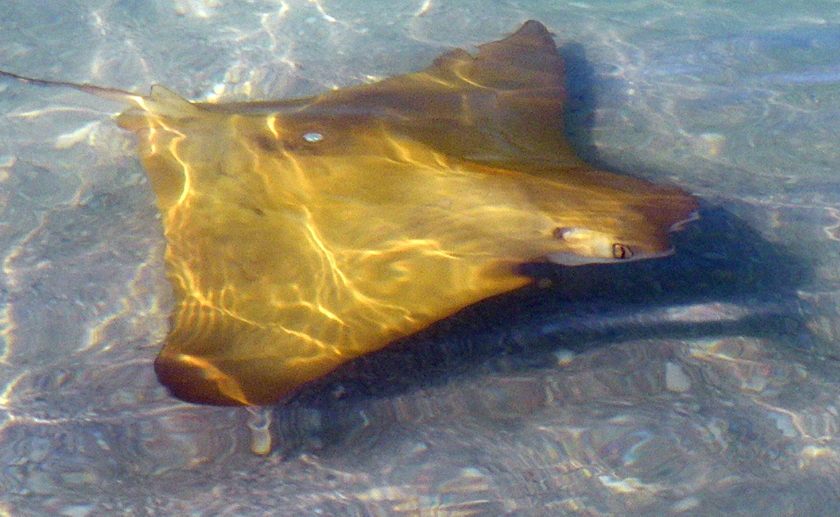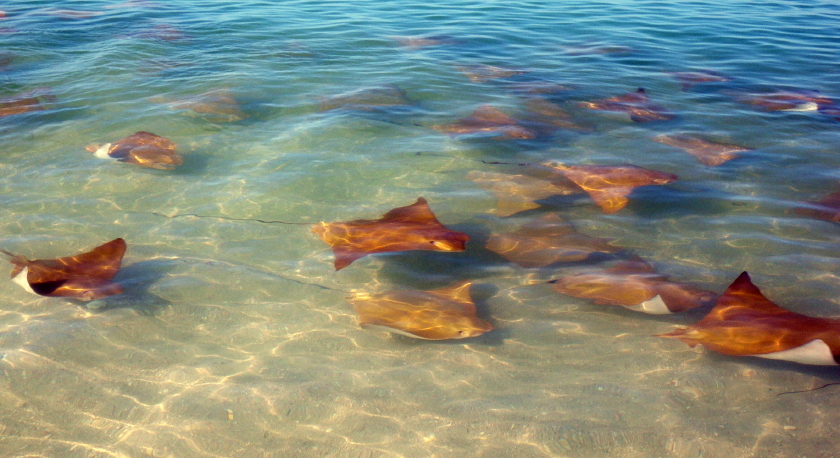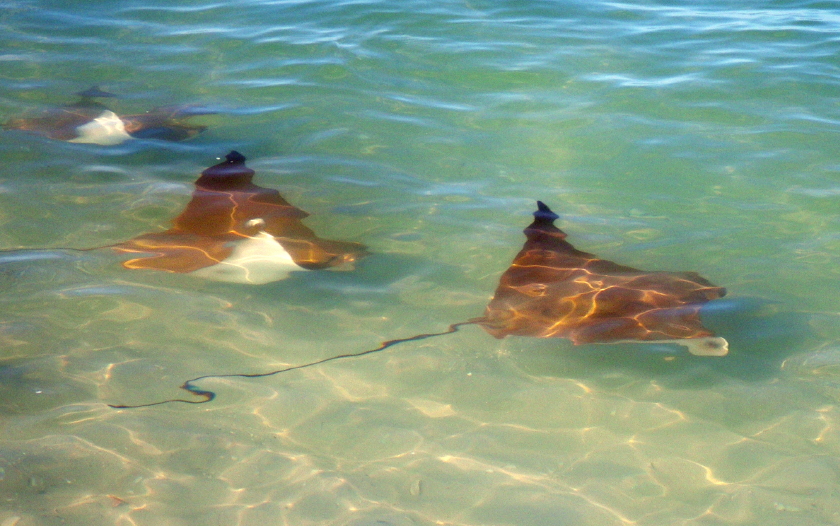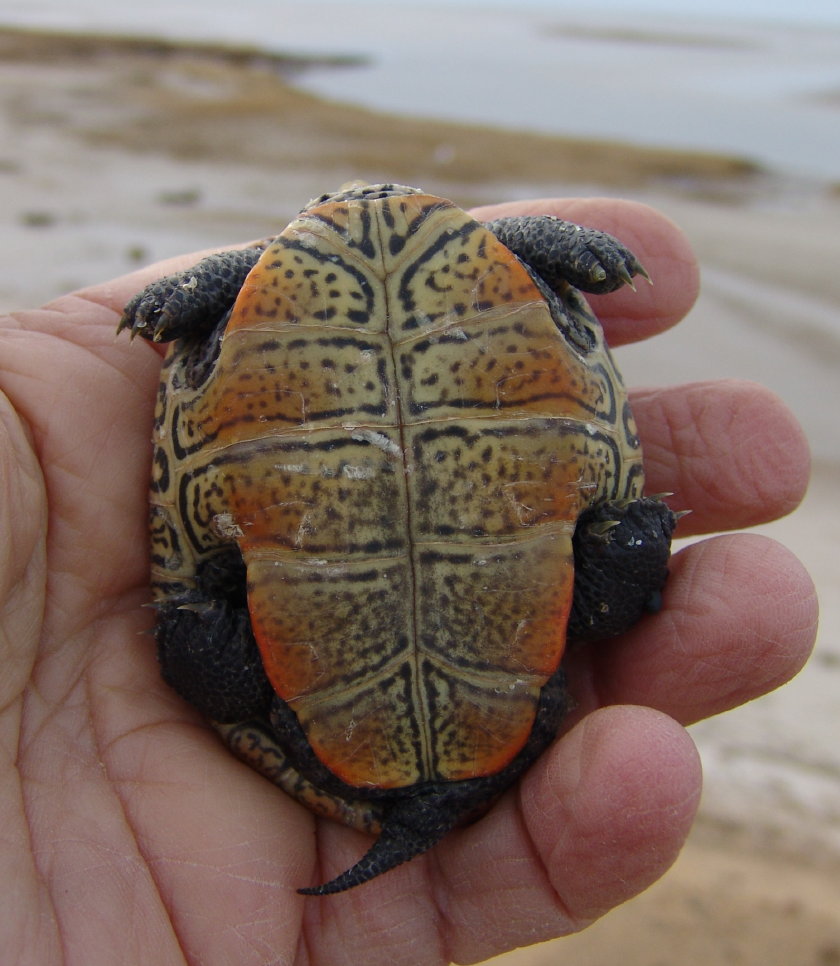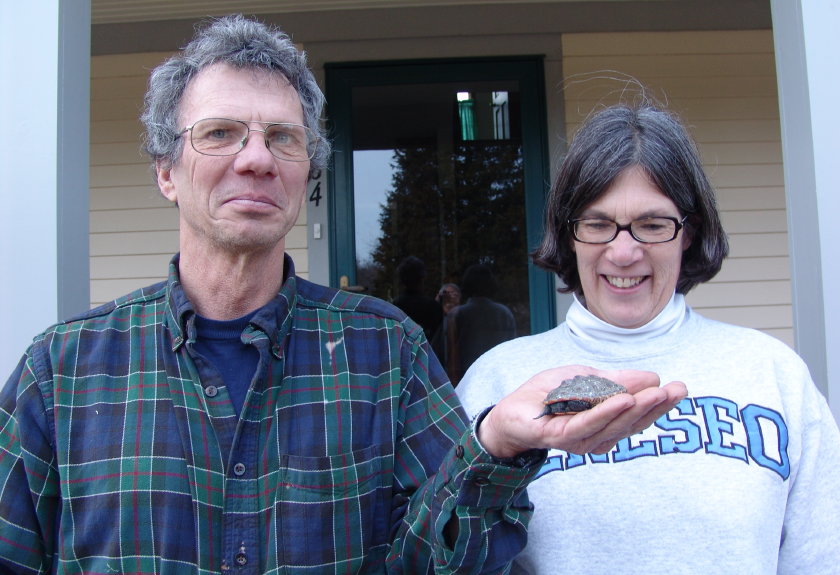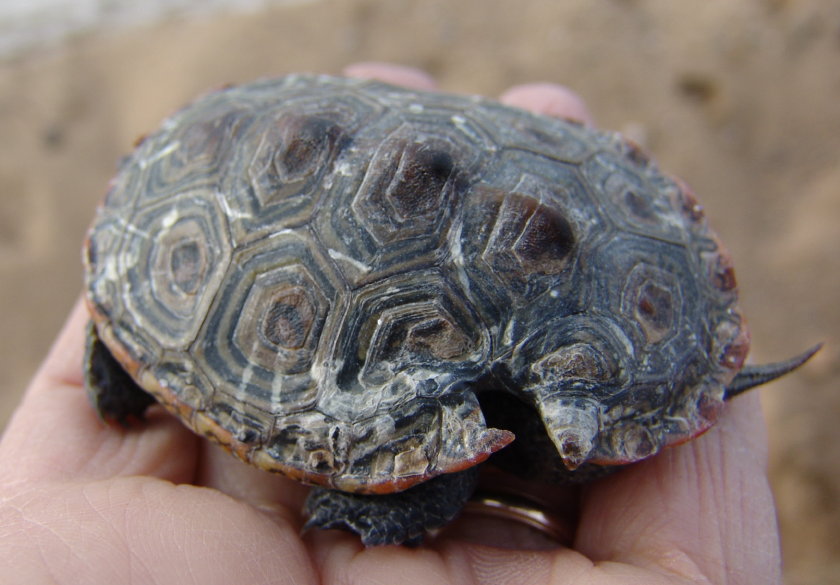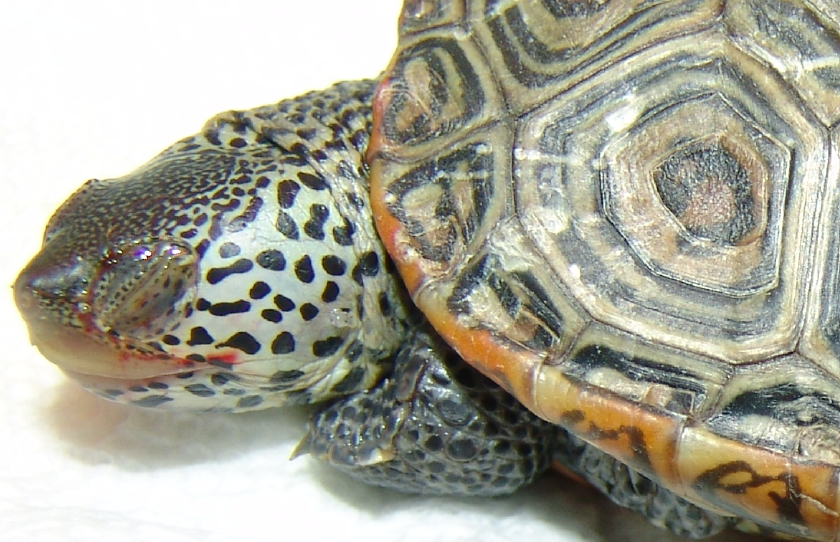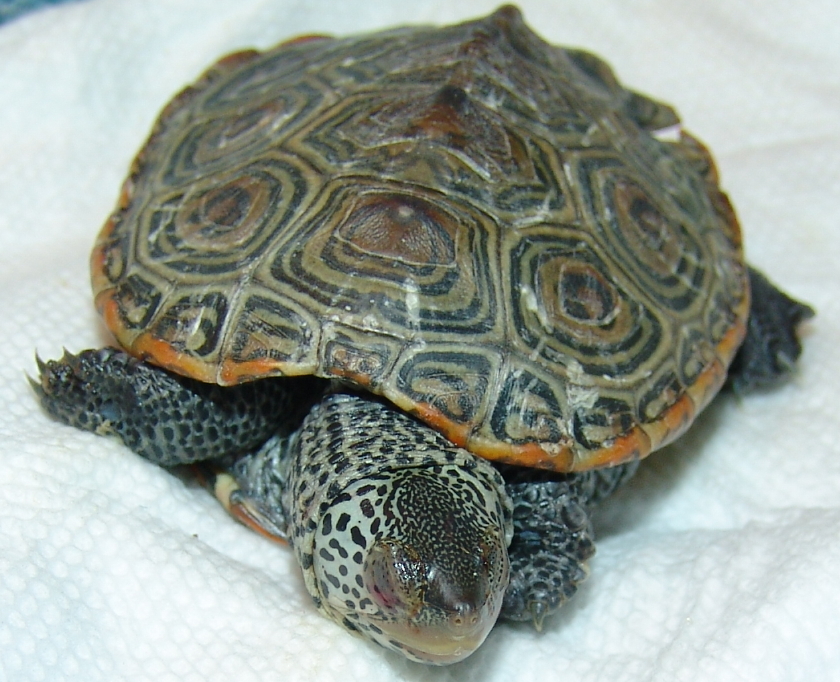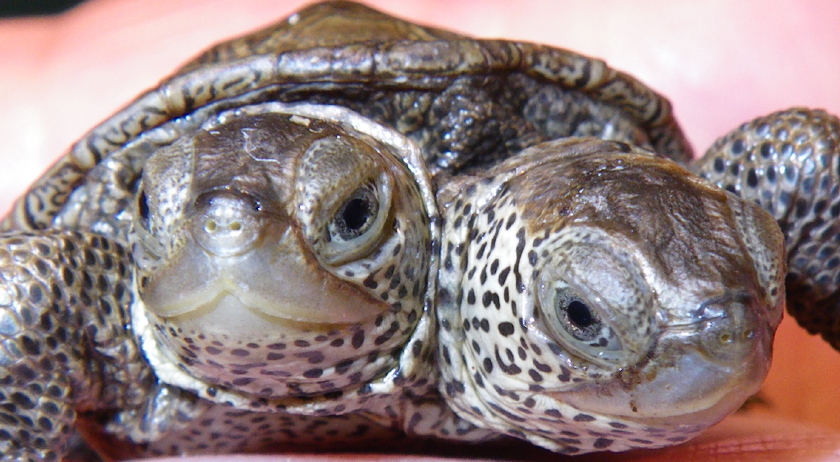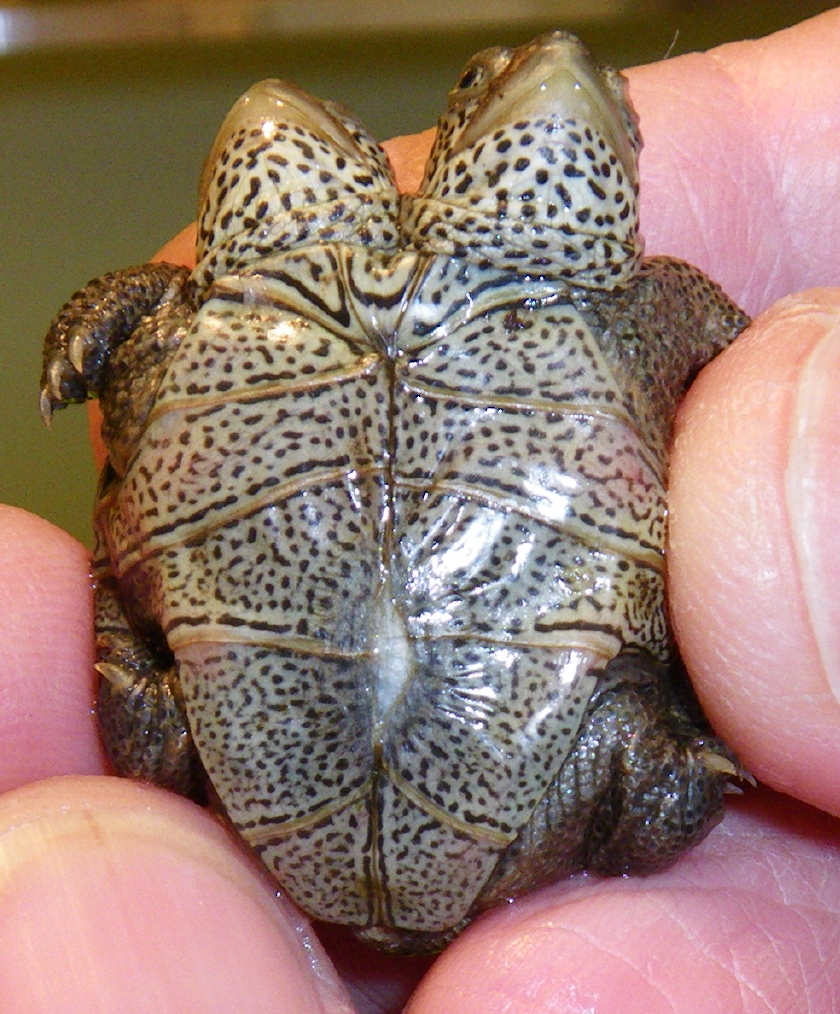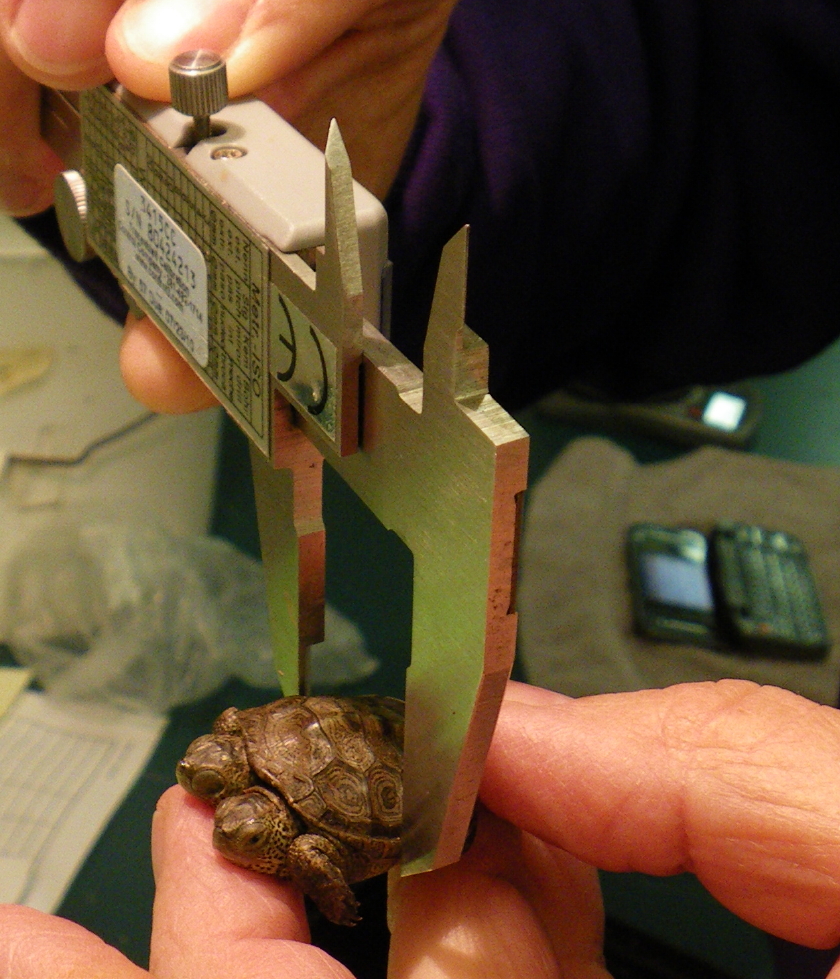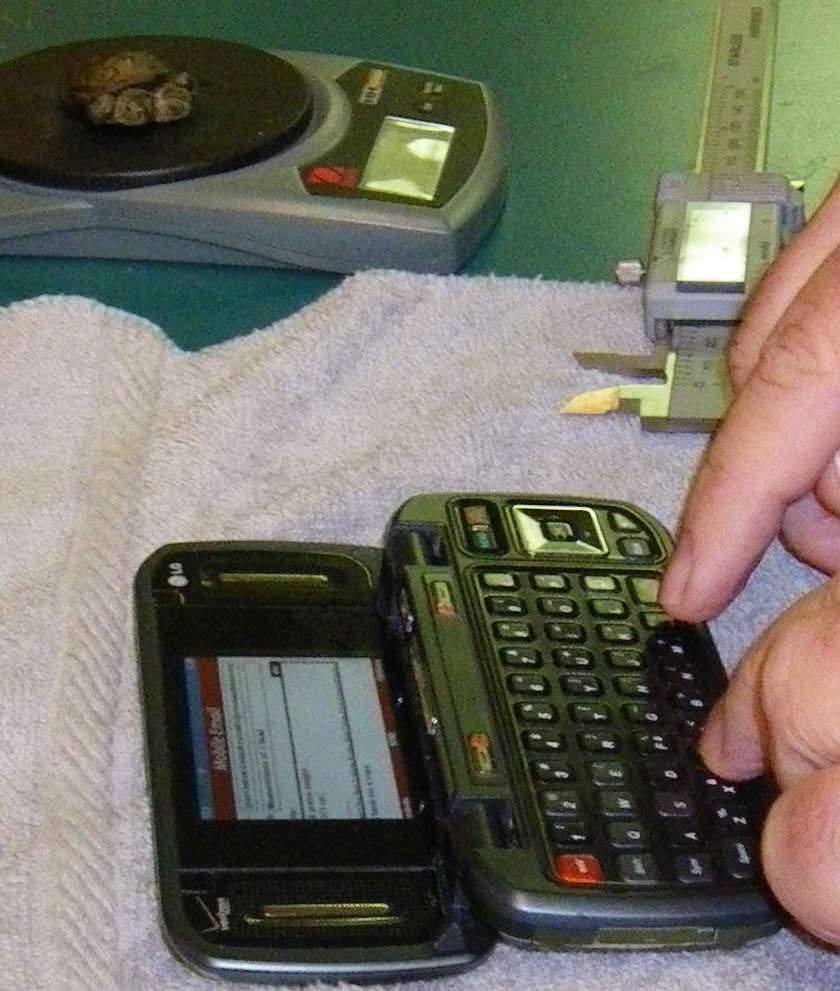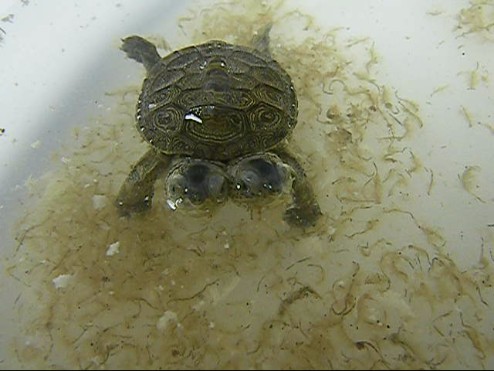Gopher Tortoise: “Where’s the Party?”
No self-respecting troglodyte turtle can resist the rumbling beat of a Southwest Florida beach party. With the moniker “Gopherus polyphemus,” gopher tortoises certainly fall within this cadre. Named after Homer’s mythical, cave-dwelling Cyclops Polyphemus who confronted Odysseus and his crew, the gopher tortoises of Naples occupy some of the finest burrows in the New World; caves that would be the envy of any Greek god or goddess.
Burrow with Sea Breeze and View
Examples of these elegant accommodations can be found anywhere along the Naples coastline. This especially appealing burrow offers a turtle’s eye view of Gulf Coast sunsets each night and is air conditioned by a steady sea breeze. Shading vegetation creates a comfortable atmosphere for siestas during the heat of the day and offers tasty snacks within easy neck reach.Â
Gopher Tortoise Walks the Rope Line at Vanderbilt Beach
As you stroll Vandebilt Beach, don’t be surprised to encounter rope lines along gopher tortoise habitat. At first we thought these barriers were erected to keep humans from interfering with turtles. But as you can clearly see from the photo above, it’s the tortoises who walk the straight and narrow, so as not to interupt the beach fun of frolicking tourists.
Gopher Tortoise High Rent District by the Ritz Carlton
Location, location, location! The real high rent district for Southwest Florida’s gopher tortoises lies within burrowing distance of the Ritz Carlton Hotel in Naples. For an earlier adventure with these upscale tortoises, see Gopher Tortoises “Puttin on the Ritz†in Naples, Florida.
Gopher Tortoise Taking Mid-Morning Siesta
March 12th proved another perfect Florida day with a bright cloudless sky and temperatures in the low 80s. Exploring Vanderbilt Beach, Sue Wieber Nourse spotted a large gopher tortoise in a burrow near the Ritz Carlton catching a few z’s during a mid-morning siesta. Suddenly, a sensuous Gulf breeze wafted the jazzy melody of party music from the Ritz beach. Apparently irresistible to a reptile’s ear, the rumbling beat seemed to lift the turtle from its lazy snooze and to tug this tortoise in the direction of the tented cabanas.
Click Here to View Video in High Quality
Gopher Tortoise Crashes Ritzy Beach Party
With neither angst nor doubt, tortoise pursued the rhythm. Cutting through dense underbrush, dodging tourists and beach crews, the turtle danced onward until its path was blocked by bottles and boxes and tools. It lay in quiet frustration for a few minutes before its rescue by the Turtle Journal team.
Tortoise “Card Check”
Since the turtle had crashed the beach party, it seemed appropriate for a casual “card check” to ensure that we weren’t serving the underaged. A quick look at its annual growth lines showed that the tortoise more than qualified for adult status.
Party Gopher Tortoise
Lifted out of its “boxed” canyon trap, the tortoise resumed its upbeat strut as it headed back towards the seductive quietude of its burrow. Beach parties are okay, but in moderation to be sure.
Â
